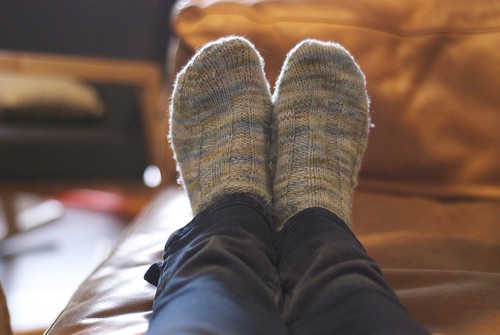I was very excited in the past few days because C has been consistently sitting for about a minute. Prop-sitting – meaning she uses her arms, but still a minute! Then, while reading over some old posts from a few months ago, I stumbled upon one from July in which I celebrated her sitting… for about a minute. That is the glacial pace of CP, or at least of C’s particular and unique version of CP. Now I will say there are significant differences between then and now. At the time she did it once and then did not repeat it for some time. She has gotten stronger and can now consistently sit for periods of about a minute several times a day, sometimes a few times in an hour. She can also get herself out of sitting (but not into it). She won’t necessarily wind up where she wants to be, but she can roll out.
I guess now that I think about it, I assumed that like a “typical” baby, one day C would just go from not-sitting to sitting. And now I realize that in this crazy CP-world, sitting is relative. Sitting independently might mean you can do it for a few seconds, or a few minutes, and a few months later, maybe even for 10 minutes.
Why is sitting such a recurring theme on this blog? I guess it’s symbolic in some ways – the ability to sit is often seen as a predictor of how affected a child will be by her CP. But practically speaking, it’s difficult having a child who can’t sit – who you can’t just plop on the floor at a friend’s, or who needs to be held or placed in equipment if she doesn’t want to lie on the ground. So for a while I was very focussed on sitting. And then I sort of stopped worrying about it, and we stopped practising or trying to get her to sit, but just did other things – swimming, more tummy time, rolling. She is undoubtedly stronger and more coordinated even if, at first glance, her sitting doesn’t seem all that different.
